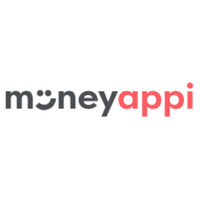Why financial education needs to be core to wellbeing strategy
As employers look to future-proof their wellbeing strategies, a clear trend of resilience is emerging. Not just mental or physical resilience, but financial resilience - giving employees the tools, confidence and support to weather financial shocks, plan for the future, and feel in control of their money day to day.
We see first-hand how financial education, delivered in the right way, can transform not just individual behaviours but entire workplace cultures. Financial wellbeing is no longer just a hygiene factor or an HR benefit line item. It’s a strategic enabler of healthier, happier, more productive teams.
The case for action
There’s no question that money worries affect performance, morale, and engagement at work. But what often gets missed is the opportunity for prevention.
Financial challenges rarely appear overnight. They build over time: a missed bill here, an overreliance on credit there, the mental load of balancing childcare, rising rent and unexpected costs. Without timely support, these pressures escalate into burnout, relationship breakdown, and even poor physical health.
That’s where financial education comes in - not as a box-ticking exercise but as an ongoing, inclusive, and practical resource that meets employees where they are. Done well, it shifts support from reactive to proactive.
What effective financial education looks like
In our experience, there are three principles that make financial education stick and make a real difference.
1. It needs to be personalised, not prescriptive: A one-size-fits-all approach doesn’t work. The needs of a graduate on a starter salary are worlds apart from a mid-career parent juggling a mortgage and childcare, or an older worker trying to support both adult children and ageing parents.
That means educational tools need to be modular and self-directed. People should be able to explore what’s relevant to them, whether that’s managing debt, planning for parental leave, or getting their head around pensions.
The most effective approach combines bite-sized digital learning with timely nudges, practical tools, and access to human support when it’s needed most.
Financial education is most powerful when it reflects real life, not abstract goals.
2. It needs to be embedded, not bolted on: People don’t engage with financial education if it feels like an extra task. It works best when it’s woven into everyday moments and core processes.
Embedding financial wellbeing across the employee lifecycle, from onboarding and pay reviews to key life events like starting a family or moving home, makes it more relevant and effective.
Employers can strengthen this by training line managers to spot signs of money stress and confidently signpost support. Integrating financial education into wellbeing hubs, learning and development pathways, and career frameworks helps make it a consistent, visible part of workplace culture.
The aim is to make financial education a natural part of how an organisation supports its people, not just a stand-alone initiative.
3. It needs to be data-informed, not assumption-driven: It’s easy to underestimate the scale or complexity of financial challenges within a workforce. That’s why data should play a central role in shaping financial education strategies.
Combining usage insights, employee feedback, and demographic data can help ensure support is relevant and well-timed, whether that’s targeting education around seasonal costs, tailoring content to different career stages, or refining delivery methods based on engagement patterns.
Financial education is most effective when it’s responsive, data-informed, and continuously evolving.
What employers can do now
If you’re reviewing your financial wellbeing approach, here are five practical steps we recommend:
1. Map the employee lifecycle: Identify the key financial touchpoints for your people, from starting a job and getting a first payslip, to life events like marriage, illness, or retirement. Build education around those moments to maximise relevance.
2. Ask employees what they need: Use surveys, workshops or informal feedback to understand what people want to learn more about. What feels overwhelming? What do they wish they’d known sooner? What formats work best? This helps shape a programme that feels inclusive and empowering.
3. Equip your people managers: Managers don’t need to be financial experts, but they are often the first people employees speak to when things get tough. Train managers to spot the signs of financial stress so they can signpost to help with confidence and empathy.
4. Keep support visible and accessible: Make it easy for people to engage with financial education, whether that’s through your wellbeing hub, HR portal or internal comms. Use simple language, clear signposting, and real-life stories to bring the support to life.
5. Measure what matters: Track what’s working, such as uptake, engagement, confidence shifts, and refine as you go. This helps ensure your programme evolves with your workforce and delivers long-term value.
Financial resilience isn’t just a buzzword
Financial education has come a long way from one-off workshops or ad hoc intranet articles. When done right, it supports resilience, giving employees the confidence and capability to handle life’s ups and downs, reduce stress, and make informed choices about their money.
It also supports your organisation. Teams with strong financial wellbeing are more focused, more loyal, and more energised. They’re less likely to be distracted by money worries, take time off due to stress, or leave for a higher salary elsewhere.
We believe financial wellbeing isn’t just about helping people survive. It’s about helping them thrive. And that starts with education that’s inclusive, practical, and built for real life.
Supplied by REBA Associate Member, Moneyappi
Proactive Financial Wellbeing, made simple, measurable, and for everyone.








